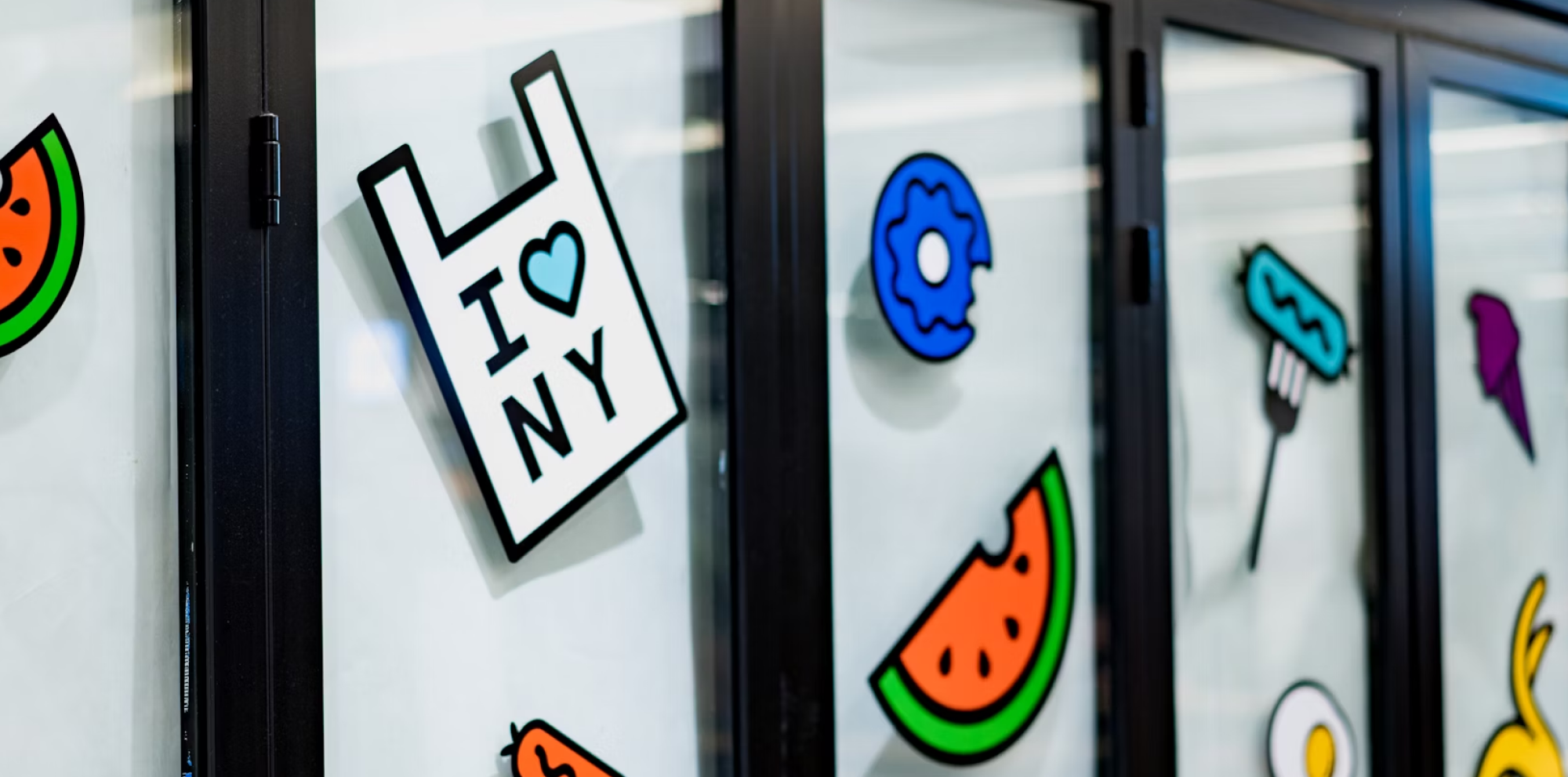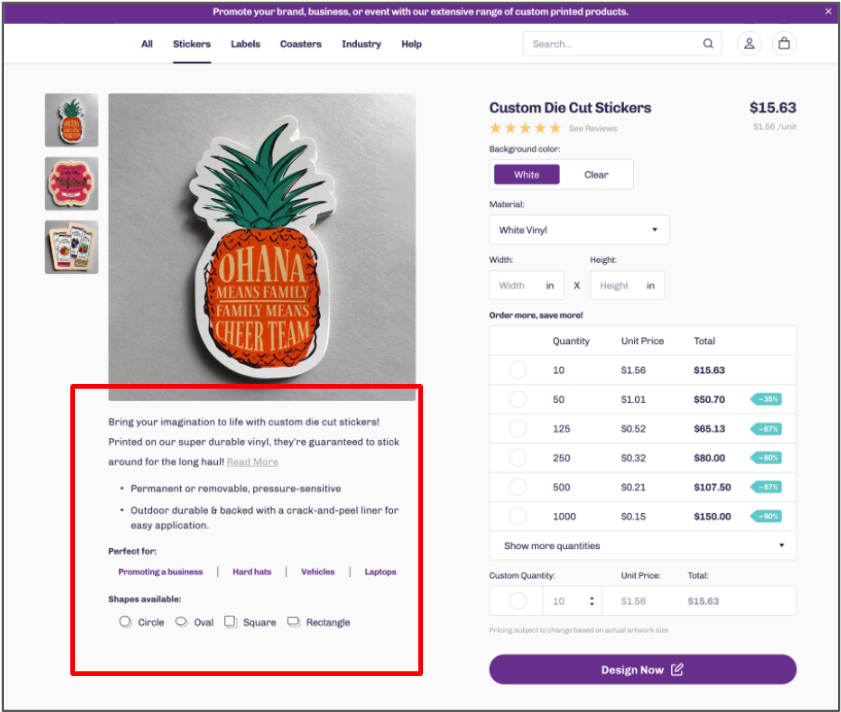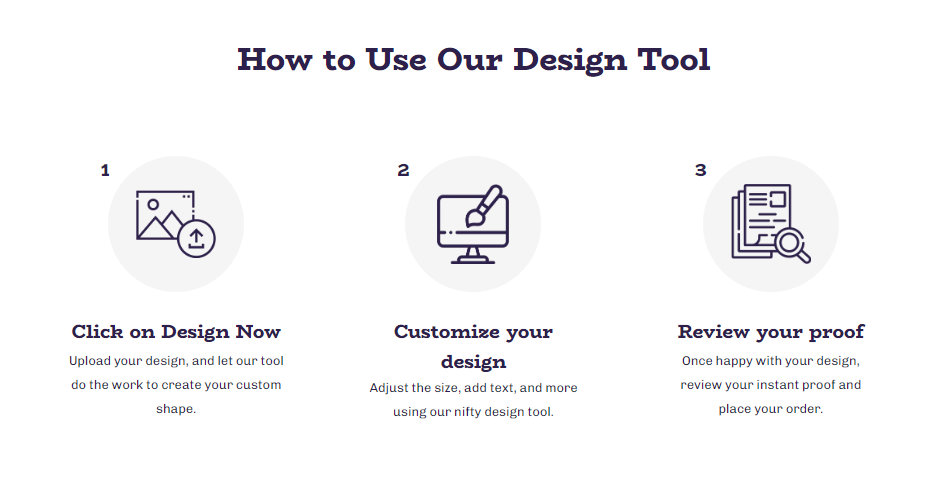Case Study: The CRO Program That Delivered 213% ROI for a US Stationery Brand
Swanky was engaged to improve conversion rate and drive revenue growth for this Shopify brand. Find out how we delivered 17 winning tests and delivered 213% ROI in year one of our engagement with this US-based retailer.
Written By
Catherine Lambert

Swanky was engaged by a US B2B stationery brand to help it optimise conversion rate on its new Shopify Plus store and drive overall revenue growth as a company.
Brand overview
The brand has been producing stickers and labels for over 30 years, catering to businesses’ diverse offline marketing requirements. It prints high-quality custom stickers and labels to fit every need – from durable vinyl decals to weather-resistant outdoor stickers.
The company’s Shopify store offers buyers a user-friendly product design interface, which allows them to easily design stickers and labels in just a few clicks. Users are provided with an instant proof to show what the finished product will look like, allowing them to skip the proofing and approval delays so often seen in the B2B offline marketing industry.
By allowing buyers to bypass the challenges often experienced when using the services of larger B2B companies, the brand has amassed a loyal customer base who love the high-quality products and excellent customer service provided.
Our approach: A data-led CRO program
Using Swanky’s data-led approach, our team set about looking to identify opportunities for improving user experience for both new and returning customers. Our aim was to improve conversion rate by addressing key on-site issues. We did this via a commercially-guided conversion rate optimisation (CRO) program.
The first stage of the CRO program was to carry out an in-depth analysis of the brand’s customer data and on-site performance. This process allowed us to identify the most critical parts of the user journey to be optimised.
The two main opportunities we noted were to:
- help users to find the right product and validate it was going to fulfil their needs; and
- improve the product design process to reduce customer drop-off at this stage of the purchase journey.
Once we had identified the key areas for optimisation, we proposed ideas for how to improve performance, each of which could be tested on our client’s site.
A/B testing
A/B testing is a process that allows us to compare the performance of a new variant (or variants) against the original, and assess the data to confirm which will produce the best results. Check out our beginners’ guide to split testing for more information.
Let’s look more closely at some of the on-site improvements we explored for our client during this project.
Helping users find the right product
Navigation
One of the first A/B tests we ran in this CRO program focused on site navigation. Previously, the store had a lengthy navigation structure which, whilst good for SEO and linking structures, did little to improve the on-site user experience (UX).
Both SEO and UX are important metrics for an ecommerce store. However, given that the navigation’s primary function is to support on-site users to find the product they are looking for, we typically suggest prioritising guiding users through to the product they have an intent to purchase.
From previous experimentation and research, we have found that users are typically only able to focus on three to four things at any given time.1 Overwhelming users with lots of options can leave them feeling less confident about what they should pick.
We designed a simplified navigation that used iconography and imagery to help lessen the burden for users, enabling them to more easily identify the different options available. When we tested this new version, the number of clicks on the navigation elements increased by 31%, which in turn increased the number of users making it to a product detail page (PDP).

Product Detail Pages
Despite this increase, we observed during the test that overall conversion rate was still not significantly impacted, because most customers were dropping off on the PDPs themselves. So, although we had helped users to find a product with an improved navigation menu, we hypothesised that the site needed to do more to validate that it was the right product for them.
We used the data collected from the navigation test to review how we presented key information about the product on the PDP. Once again, we speculated that simplification was key.
Our analysis was that the lengthy blocks of text on the PDP were not helping users identify the key information quick enough and thus leading to a high number of users exiting from these pages.
Instead, we converted the blocks of text into bullet points, including a separate section which highlighted ‘perfect for’ use cases. We also included the same icons from the navigation to allow users to click between the same product in different styles.

These improvements dramatically improved performance on the PDPs and led to an increase in conversion rate of 27%.
Further improvements
Since these initial tests, Swanky’s CRO team used the learnings to inform further successful optimisations. In particular, our CRO program has focused on helping users get to the right product and validate its use for their needs.
Other improvements include changing how users filter and search for products and adding more information to collection page product cards for items which users tend to have more questions about.
Improving the product design process
The second main area of focus was to reduce drop-off during the product design process on our client’s site. Our initial research, using customer interviews, found that users who frequently visited the website were, overall, happy with the design process.
However, through further analysis of the user funnel, we could see this was still one of the greatest drop-off areas on the site. As a result, we hypothesised we needed to improve the experience for new users going through the process. Much of this would involve educating users on how to use the design tool and providing further reassurance that their design would turn out how they envisioned.
We trialed adding ‘Tool Tip’ functionality, which walked users through how to use the tool, guiding them through the key elements on the page before beginning their design. We also launched a new and enlarged review portal, so users could better see their proof and review the design before adding the item to cart.
This functionality increased conversion rate by 16%, with users significantly more likely to make a purchase after being shown in detail how to use the tool. Furthermore, enlarging the size of the review portal increased conversion rate by a further 38% for users who made it to this stage.
Taking these learnings into consideration, we were able to apply similar principles to tests further along the user journey. This included explaining how the tool works on landing pages and the PDPs themselves.
By preparing users earlier in their journey for how to create their customisable products, we reduce the likelihood of them being overwhelmed when they reach that stage in the process.
We have also continued to test simpler changes to the design tool – such as the language used – to determine the best iteration going forward.

Rather than simply accepting a winning test as the final iteration, our team’s philosophy is to continually learn from and improve on previous work, leveraging learnings from losing tests as well as winning ones.
The results
Across the first 12 months of Swanky’s engagement with this brand, our CRO program achieved 17 winning tests, with an average win rate of 65%. This is far above the industry average win rate, which Optimizely places at between 10%-20%2, and Convert records as only 1 out of every 7.5 tests.3
The result was a 30% uplift in user conversion rate to transactions YoY.
What’s more, the brand benefited from an ROI of 213% from working with Swanky over this period.
A CRO agency to improve your key metrics
Are you looking to boost conversion rate on your Shopify Plus store? Swanky’s award-winning CRO team has run hundreds of tests for brands across the world, generating millions of additional dollars in revenue for the likes of DockATot, YuMove, Shackleton and Pulse Boutique.
Our process seeks to gain a deep understanding of your customer behaviour that will inform the growth strategy for your business.
If you’d like to hear more about how we could help you improve the performance of your Shopify Plus store with an expert-led CRO program, get in touch with our team today to book an initial consultation.
For reference:
[1] https://www.livescience.com/2493-mind-limit-4.html
[2] https://www.optimizely.com/insights/blog/get-more-wins-experimentation-metrics-for-program-success/
[3] https://www.convert.com/blog/a-b-testing/ab-testing-stats/

